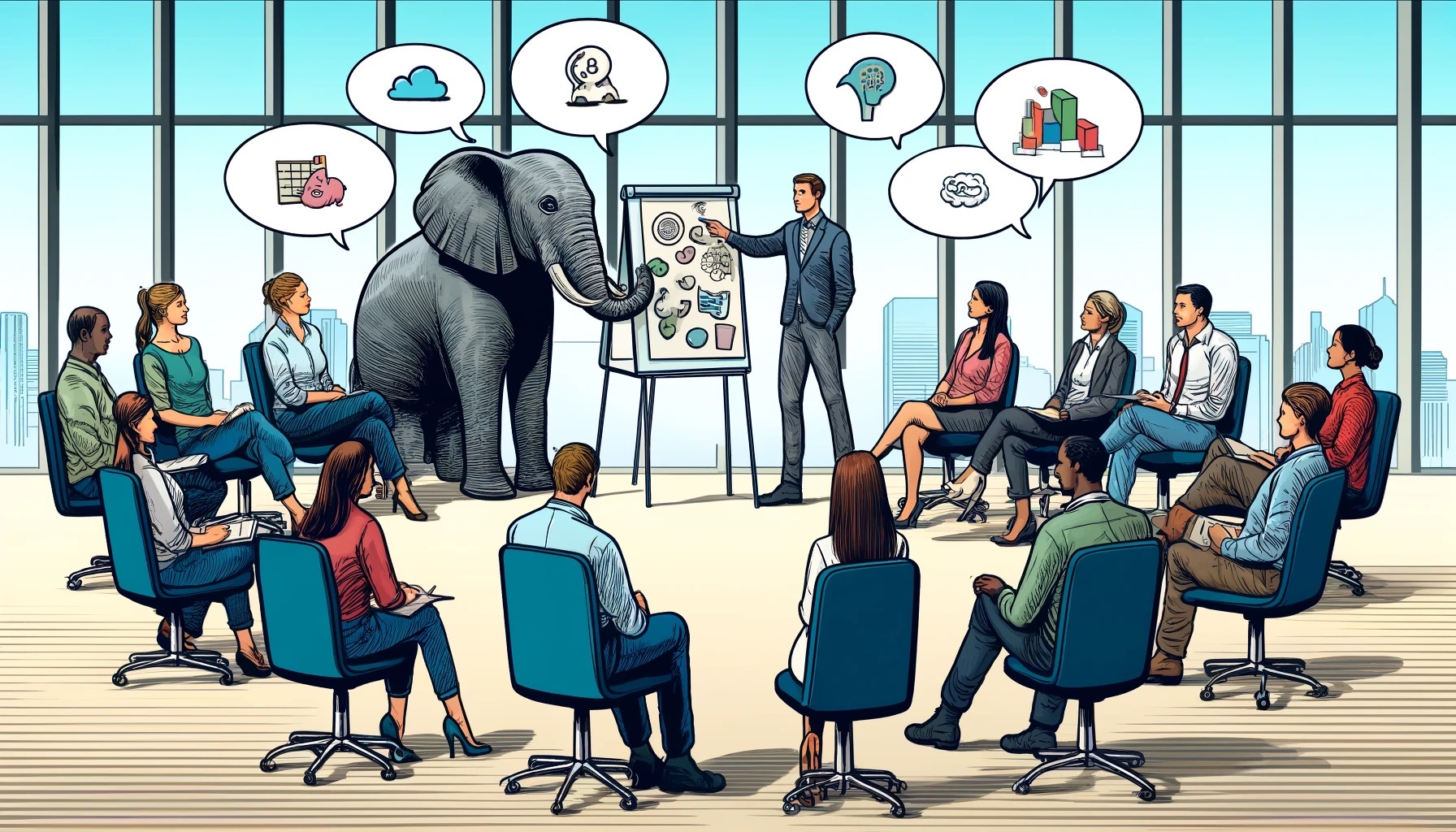
Enterprise Architect KSAs: Stakeholder Elicitation
by
John P. Zachman
© 2024 John P. Zachman, Zachman International, Inc.
Stakeholder Elicitation

Enterprise architects must be able to assess how well an organization's IT infrastructure and business processes align with its business objectives. This involves more than just coding and technical skills; enterprise architects are responsible for managing the enterprise's descriptive representations, such as architecture models. Therefore, one of their key skills is stakeholder elicitation, which includes identifying and engaging stakeholders to gather their requirements, concerns, and expectations.
If the architecture doesn’t align with the stakeholder’s Zachman Framework Column 6, Row 1 Motivation models, ensuring that the resulting architecture aligns with the executives' vision becomes challenging. Effective stakeholder elicitation is essential to ensure that the enterprise architecture meets the needs of all relevant parties, thereby enhancing the overall success of projects and their implementation.
Furthermore, Row 6 of the Zachman Framework highlights the importance of system rules in alignment with business processes and business rules. A misalignment here can negate achieving business goals, as the system's operational rules may conflict with the intended business processes, leading to inefficiencies and obstacles in realizing strategic objectives. Ensuring that system rules and business processes are in harmony is crucial for the enterprise architecture to support and drive the organization's goals effectively. The following are some techniques that enterprise architects can use to develop these stakeholder requirements.
1. Interviews
Interviews are a direct method of gathering stakeholder information through one-on-one or small-group discussions.
- Techniques:
- Structured Interviews: Use predefined questions to ensure consistency across different stakeholders.
- Unstructured Interviews: Allow for a free-flowing conversation to explore stakeholder insights in-depth and capture these for engineering.
- Semi-Structured Interviews: Combine both approaches, using a mix of predefined questions and open-ended prompts.
- Benefits:
- Detailed and specific information can be obtained.
- Allows for clarification and follow-up questions.
- Challenges:
- It can be very time-consuming.
- Interview planning sessions require skilled interviewers to manage the conversation effectively.
2. Surveys and Questionnaires
Surveys and questionnaires involve systematically distributing questions to large stakeholders (depending on the organization's size) to gather information.
- Techniques:
- Closed-Ended Questions: Provide predefined options for respondents to choose from.
- EAs must caution themselves from leading stakeholders to directed conclusions.
- Open-Ended Questions: Allow stakeholders to provide more detailed responses in their own words.
- Likert Scale Questions: Measure attitudes or opinions on a scale (e.g., from strongly agree to disagree strongly).
- Closed-Ended Questions: Provide predefined options for respondents to choose from.
- Benefits:
- Can reach a large number of stakeholders quickly.
- Quantitative data is accessible to analyze.
- Challenges:
- Limited depth of information.
- Risk of low response rates.
- Personal bias based on methodology or technology can drive results.
3. Workshops
Workshops are interactive sessions that unite multiple stakeholders to discuss and explore requirements collaboratively.
- Techniques:
- Brainstorming Sessions: Encourage free thinking and idea generation.
- Focus Groups: Facilitate targeted discussions on specific topics.
- Be sure to engage stakeholders in not only what they want but what they don’t want.
- Consensus Workshops: Aim to reach a common agreement on priorities or decisions.
- Benefits:
- Promotes collaboration and idea sharing.
- Can identify common concerns and priorities.
- Challenges:
- It can be challenging to manage large groups.
- More vocal participants may dominate it.
4. Observation
Observation involves watching stakeholders in their work environment to understand their processes, challenges, and needs.
- Techniques:
- Passive Observation: The observer does not interact with the stakeholders.
- Active Observation: The observer interacts with stakeholders and asks questions while observing.
- Benefits:
- Provides real-world insights into stakeholder activities.
- Can uncover issues that should be mentioned in interviews or surveys.
- Challenges:
- It is time-consuming and potentially intrusive.
- It may require multiple sessions to get a comprehensive understanding.
5. Document Analysis
Document analysis involves reviewing existing documentation related to the enterprise architecture, such as business plans, process diagrams, and previous project reports.
- Techniques:
- Content Analysis: Systematically examine documents for specific information.
- Comparative Analysis: Compare documents to identify inconsistencies or gaps.
- Benefits:
- It is non-intrusive and can be done independently.
- Provides historical context and background information.
- Challenges:
- It may need to capture the most current stakeholder needs.
- Requires access to relevant and comprehensive documents.
6. Use Cases and Scenarios
Use cases and scenarios to describe specific situations or sequences of events to illustrate how stakeholders interact with a system or process.
- Techniques:
- Use Case Diagrams: Visual representations of interactions between stakeholders and systems.
- Scenario Writing: Narrative descriptions of specific situations.
- Benefits:
- It helps visualize requirements and identify potential issues.
- Engages stakeholders by illustrating real-world applications.
- Challenges:
- It can be time-consuming to develop.
- Requires validation with stakeholders to ensure accuracy.
7. Prototyping
Prototyping involves creating preliminary models or simulations of a system or process to gather feedback from stakeholders.
- Techniques:
- Low-Fidelity Prototypes: Simple models or sketches.
- High-Fidelity Prototypes: Detailed and interactive simulations.
- Benefits:
- Provides tangible examples for stakeholders to review.
- Facilitates early detection of issues and refinement of requirements.
- Challenges:
- Resource-intensive.
- Risk of stakeholders focusing too much on the prototype details rather than underlying requirements.
Conclusion
Effective stakeholder elicitation is critical for the success of enterprise architecture engineering deployment. By employing techniques such as interviews, surveys, workshops, observation, document analysis, use cases, and prototyping, enterprise architects can gather comprehensive and accurate requirements to begin building the models that will guide the architecture, neutral of any technology. Understanding the strengths and challenges of each technique allows architects to choose the most appropriate methods for their specific context, ensuring that the enterprise architecture aligns with stakeholder needs and organizational goals.
